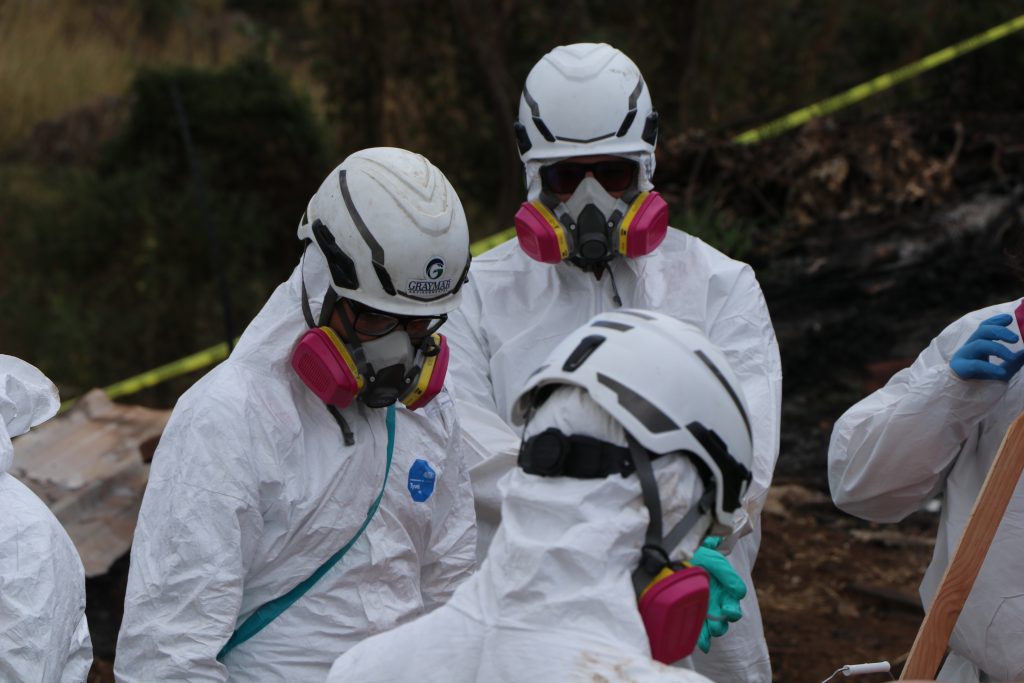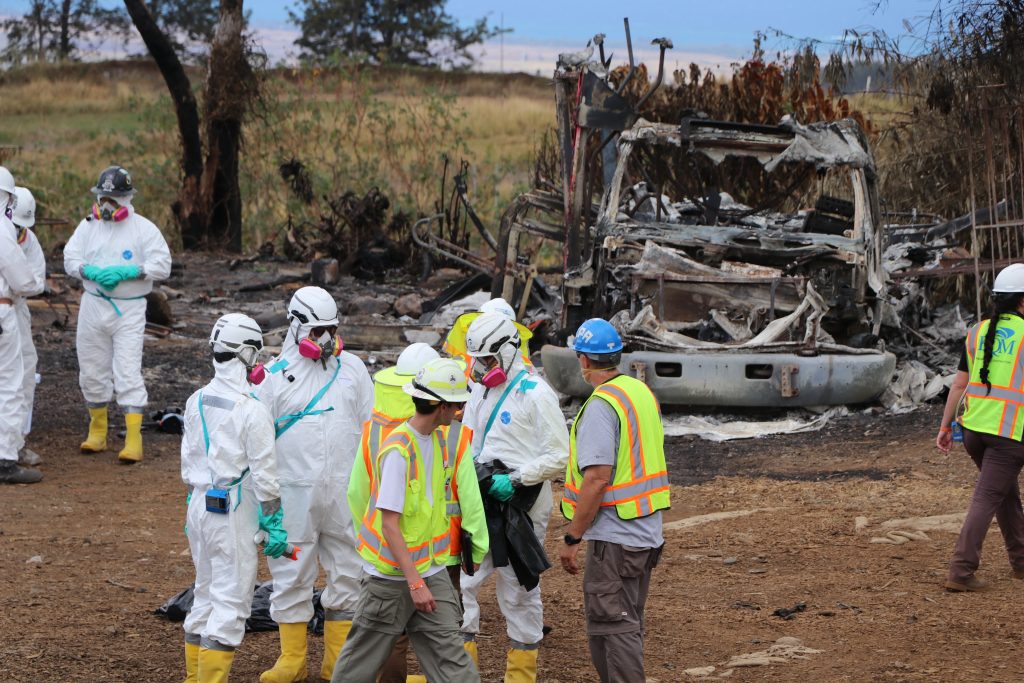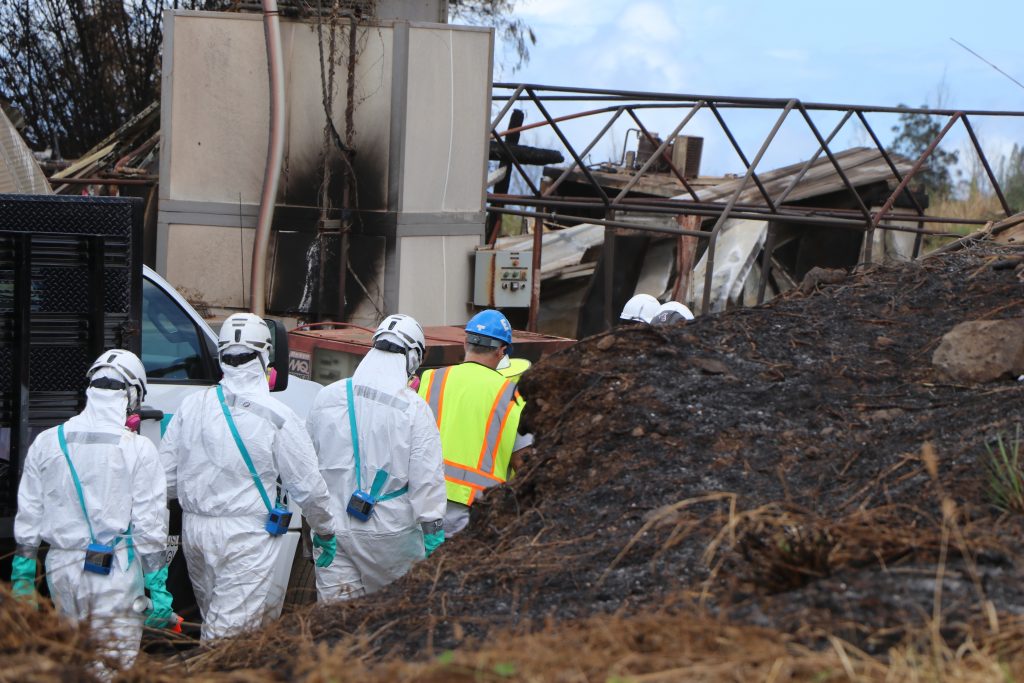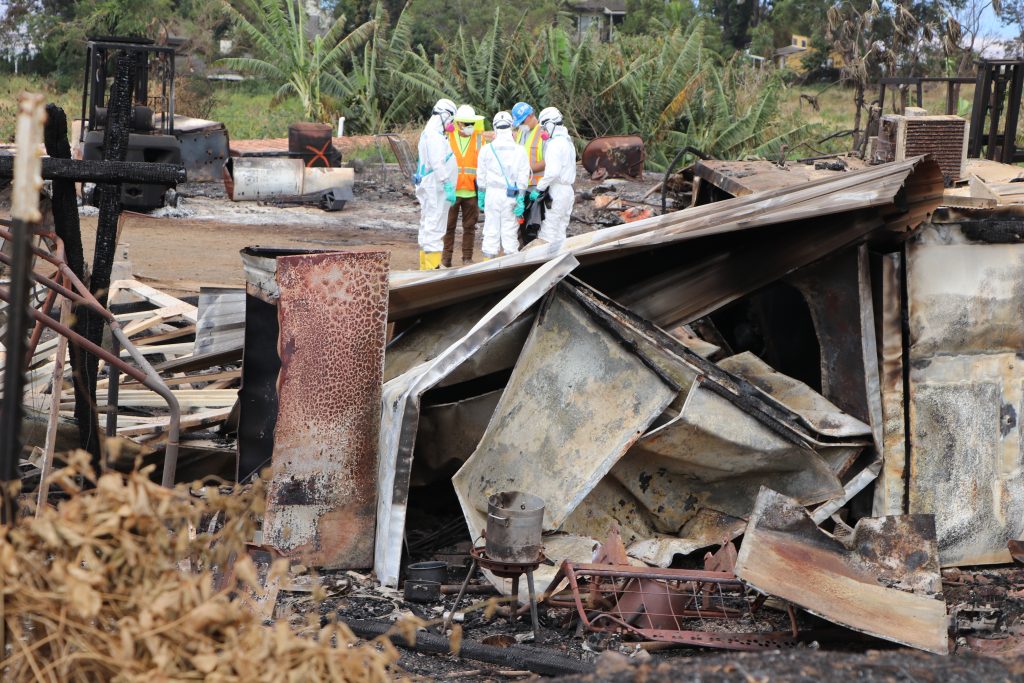US EPA begins hazardous waste removal work at Kula wildfire site
The US Environmental Protection Agency on Wednesday began work to remove and dispose of hazardous waste from properties affected by the wildfires in Kula, county officials said.
EPA will survey, remove, and dispose of hazardous waste materials including paints, cleaners, solvents, oils, batteries, and pesticides. Fuel from pressurized cylinders and tanks will be removed, and the empty containers will be marked for removal during a future second phase. Workers will also remove items thought to contain asbestos if they are easy to identify, but the property will not be fully cleared of asbestos until the second phase of the hazardous waste removal process, according to a County of Maui news release.
“Following a fire, these hazardous materials require special handling and disposal, especially if their containers are damaged. These efforts will reduce potential threats to public health and safety and allow other agencies to remove solid waste, debris, and ash in the affected areas,” according to the release.
EPA workers will only be removing Household Hazardous Waste. EPA will also immediately stop work and contact the Maui Police Department if functional firearms or suspected remains are found.
During active removal work, EPA will conduct air monitoring for particulate matter (dust-like material) and air sampling for heavy metals and asbestos. After this first phase of work is complete, EPA will apply an adhesive called “Soiltac” on any debris and ash on the property to prevent dust from blowing off the property. The Soiltac EPA will use is dyed pink and is non-toxic and biodegradable.
Hazardous waste removal efforts in the Lahaina disaster area will start after search and rescue responders allow EPA crews to enter the area.
EPA’s work is authorized by a Federal Emergency Management Agency-issued federal disaster declaration mission assignment for wildfire recovery.
For additional information on EPA’s work, please visit its Maui Wildfires website.
For additional information on the recovery efforts in Maui, please visit the Maui County Website or the Maui Nui Strong website.























